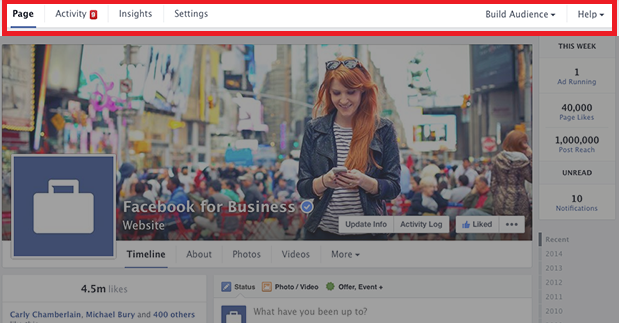First of all, I couldn’t believe that I would be writing my second blog so soon. Believe me, I have tried this couple of times in the past and all I could do was write one blog and forget it for next one year. Let’s see how long am I gonna continue with this one. J
Now back to the topic, today we will talk about 5 common mistakes that an email marketer makes while rolling out the email campaigns. We will not go into the details about content part as it will be a different discussion altogether. (But we will cover that in my upcoming blogs!) We will talk about simple but important parameters that should be considered while sending out a campaign. We will also look at the email campaigns of companies like Bookmyshow, Inox, National geographic, ICICI bank and ICICI Lombard. So let’s get started! Point number 1 is...
1.Use of Proper links in CTA (Call-to-Action)
When we send an email to our prospects, we expect them to take certain action; it could be filling up a lead/enquiry form, sharing our email on social media platforms, to book a ticket or something else. Now in order to make our customer take these actions we must help them to navigate with proper links. For example if we want our customer to fill up a lead form then we must have a link saying “enquire now” or “know more”. When a user clicks on that particular link he/she should be redirected to a proper landing page where in they can fill up the details like name, contact number, city etc... we should avoid using generic links like our website’s homepage!
Let’s try to understand this with the help of a live example from entertainment industry. Since I am a movie buff, I have subscribed myself to the newsletters of the two giants in online ticketing industry – Bookmyshow and Inox. First of all let me show you what I received from Inox.
 |
| Inox |
This is a simple mailer informing me about the upcoming movies. For Inox, the desirable action from customer/me would be to book the tickets but when I tried to click on the image of “Sholay” poster I landed on the Inox homepage which is slightly complex and I had to find my way to book the ticket for “Sholay” by going through various links (approx 10).
Now let’s see how bookmyshow is doing this. I received following email from them,
 |
| BookMyShow |
Quite similar to what Inox had sent but, when I clicked on the image of “sholay” I landed directly on the show timings page! All I had to do was to select the show and book the ticket. So bookmyshow helped me to reduce my set of steps from approx 10 to 5, I still booked the show in Inox theatre as they have got awesome sound quality but I used bookmyshow’s platform!
One more point to be noted in here is that Inox is not doing something wrong (I mean you can book the tickets from their homepage) but the user experience is much simpler in bookmyshow case.
2.Proper Identity of sender –Domain name
Whenever we receive an email, we expect that sender of the email is legitimate. We don’t want some spammer to send us any promotional campaigns or we would not like to get trapped in some spoofing activity. Now how do we make sure that sender is genuine? This can be done by checking the domain name of the sender. Let’s try to understand this with the help of an example. I had received the following email from the national geographic.
 |
| National Geographic |
Now there is nothing wrong with the content but when I tried to find the sender of the emailer, it was some random third party (marked in red box). My first action was to unsubscribe myself from this list. I don’t have any problem if National Geographic is sending me emails but I do have problem with such random third parties who are completely alien to me. This could have been corrected while sending the campaign by altering the sender’s name and identity. So even though content was right it sends a wrong impression in customer’s mind that companies like National geography is using such irrelevant vendors to roll out their campaigns.
3.SPF and DKIM entry
As we discussed in my last blog that most of the
deliverability issues are caused by incorrect or missing SPF and DKIM entry. Each and every email marketer must take this in to consideration before rolling out any of the campaigns.
4.Proper sender’s (reply to) email id
There are many occasions where in we receive an email from a company about some offers & services and we have some doubts about it. So best practice would be to directly reply on that email id (I mean that’s exactly what we do when we receive an email from someone!). But still brands like ICICI are not doing this properly. For example I received the following email from the ICICI bank.
 |
| ICICI Bank |
I was interested in the content but I had few queries so I thought to directly reply on that email. When I clicked on reply button, I saw this!
 |
| ICICI Bank |
Now who the hell is this guy and why the hell is he sending me such emails? Later I had to visit their website, called customer executive and it took me a while to clarify my doubts but had a bad email experience. So to avoid confusion and facilitate better customer service an email marketer must use valid and proper reply to email address.
5.Sender’s IP Score/Reputation – this is BIG!
IP (Internet Protocol) is an identifier for a computer or device on a network. When an email marketer rolls out the campaign they send it from some specific set of IP addresses which works as their identity in Internet space. All the ESP (Email service providers) and ISPs (Internet Service Providers) monitors the activity of various IPs all the time and basis which they score them.
So it’s very important to monitor the score and reputation of your IPs. If your score is below 75 (out of 100) your emails might get flagged as spam. There are many factors which are considered while measuring the reputation. Few of the important ones are
- SPF and DKIM verification
- Email volumes
- Frequency at which emails are sent
- Spam reports by users and others
Let’s quickly look at the IP reputation and score of ICICI Lombard.
 |
| ICICI Lombard |
Now if you will look closely, the first three IPS are safe in terms of SPF verification but rest all are under the scanner. Also the score of three of its IP (marked in RED) is below 20! So, all the emails that are being sent from this IPs will definitely land in junk folder. An email marketer must monitor this scores on a regular interval else we might end up sending a successful campaign but we may not get the desired results.
Do share your feedback! We will talk about the content part for email marketing in my next blog. Till then take care and happy reading!






































